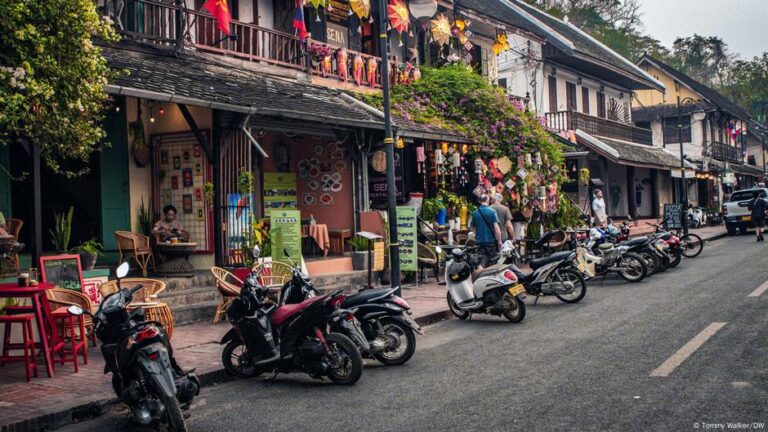Luang Prabang, in the north of Laos, is experiencing something of an economic boom. When the author of this article last visited in 2012, the city’s central street and roadway, Sisavangvong Road, did not have many foreign tourists, and most of Westerners were backpackers just passing through to either Thailand or Vietnam. The hospitality scene felt limited.
But things are different today. Handicraft markets have popped up at the south end of the now-bustling road, near tight alleys leading from the Wat Pa Phai Buddhist temple. Further down Sisavangvong, many international travelers and tourists can be seen dining and drinking in quirky bars and restaurants. Even the adjacent streets have improved, with fancy eateries, cocktail bars, and travel agents ready to serve its international clientele.
Official figures show a 162% increase in visitors year over year as of April 2025. Luang Prabang has also been named by Lonely Planet as Asia’s top place to visit for 2025.
Thousands of families escape poverty in Luang Prabang
The Laotian province aimed for 900,000 visitors last year — it got over 2 million, generating some $560 million (€491 million) in revenue. Thanks to the money flowing into the city, officials say that over 16,000 families have moved out of poverty, which is 98.3% of the city’s total population.
In March this year, Mayor Viengthong Hatsachan said improvements to the infrastructure, including roads, transport and utilities, have made Luang Prabang poverty free.
In Laos, the criteria for being free from poverty include stable employment, a permanent home, secondary-level education and access to basic health care, clean water and energy.
Laos pressured by inflation, public debt
But Laos, with its 7.8 million inhabitants living mostly in rural environments across a territory that is bigger than the UK, still struggles to raise living standards. As of 2023, official data shows that nearly 17% of its families were living in poverty, but assessments by international organizations suggest the actual rate could be higher when considering factors like access to education and health care, among others. The Southeast Asian country is ruled by a single party, the Lao People’s Revolutionary Party, and UN benchmarks classify it as one of the world’s 44 Least Developed Countries (LCDs).
And last year it was reported Laos had a total public debt of $13.8 billion, which was 108% of the country’s GDP. It’s currency, Lao Kip, also depreciated to record lows against the US dollar and Thai Baht, making it harder to pay back any debt.
The country is heavily reliant on agriculture, with a large proportion of the population working the fields or engaged at other points of the food production chain.
Laos has also invested heavily in hydropower, aiming to become the “battery” of supplying electricity to countries in Southeast Asia. However, these investments have been costly, with Laos deep in debt with Chinese energy firms. On the other hand, thanks to Chinese investment, Laos now boasts a high-speed train line connecting its capital Vientiane to the Chinese border, and there are also discussions of linking Vientiane with Cambodia.
Can Laos use tourism to get rich?
The rise of Laos’ ancient capital Luang Prabang brings hope that the entire country could follow in its footsteps and boost tourism earnings to alleviate poverty. But analysts warn that not all visitors bring new business to the local population.
For example, over a million Chinese tourists visited Laos in 2024. However, many of those are so-called “zero-dollar” tour groups that pay low rates and only spend money in Chinese-associated businesses, almost entirely bypassing the local economy.
“While the new high-speed railway connecting China to Laos has increased arrivals, it has not translated into meaningful economic benefits for the local Lao population,” says Professor Worrawoot Jumlongnark from Thailand’s Mahasarakham University.
For others, like Inthy Danesavanh, chairman at the Inthira Group and an eco-tourism specialist in Laos, boosting tourism is a key piece of the puzzle, in addition to improving agriculture.
“Luang Prabang province is along the line of the Laos-Chinese railway, and we can focus more on agriculture, and exports, and the railway can export to the huge Chinese market and this can bring benefit to the local people,” he said.
“And I strongly believe in tourism because Laos is surrounded by five countries with bigger populations. It’s more than 200 million tourists a year traveling around Laos, next to Laos. I think tourism, agriculture, and logistics, focusing on good roads and access, I think the three sectors have a future for Laos to get rid of this poverty,” he told DW.
Edited by: Darko Janjevic


